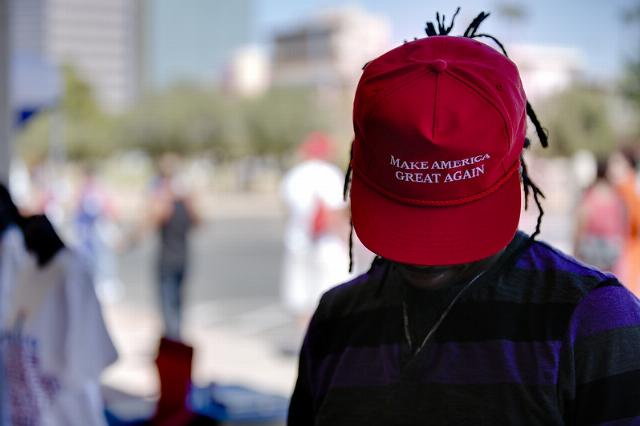Inauguration Day 2025: Should there be time limits on hugs?
It’s a question of deep philosophical import: How long should a hug between two consenting people last? New Zealanders have their own idea, which may be a bit exuberant for us, even on Inauguration Day.
New Zealanders — once stoic, if not standoffish — now comprise a nation of huggers. Apparently, this is becoming a problem at Dunedin International Airport, where signs now exhort travelers to limit their goodbye hugs to three minutes. That’s a darn long time to squeeze the flesh, almost enough to establish a telepathic connection, indeed.
The goal is to reduce traffic congestion, especially in drop-off zones, but it may backfire. Does the three-minute rule apply equally to a single couple as to a large family? Shouldn’t it be two minutes for domestic departures, and four minutes for international departures? Furthermore, couples who normally conduct a perfunctory embrace may feel compelled to prove their commitment by locking-in for the advertised time-limit.
The airport’s CEO said the three-minute rule is about enabling others to have hugs. Presuming they are cuddly (except for their Maori-inspired Haka dancers, who are quite fearsome), anyone who embraces for three minutes should probably get a room for a conjugal-style goodbye. However, the sign at the New Zealand airport reads, in part, “For fonder farewells, please use the car park.”
New Zealanders have a deserved reputation for being friendly and cheerful, but hugging for three minutes (before the cap even kicks in) in public is overly-familiar behavior. Doing it for longer in the “car park” could constitute public exhibitionism, so the local hotel may be more discreet.
The average time for a hug between two people is three seconds.
At 20 seconds, the “love hormone” oxytocin unleashes therapeutic benefits that replenish the mind and soul — and body, if one is lucky. There are actually people with nothing better to do than examine hugging behavior, and they recommend thirty seconds to induce those feel-good hormones.
But BlueCross/BlueShield is in-between. An article from their BCBSIL Connect Team recommends ten-second hugs to engender a “fuzzy sense of well-being” with enduring benefits.
Those benefits sure didn’t accrue to Benjamin Netanyahu when a ghoulish and wincing Joe Biden put his slimy tentacles around him. Just look at this disturbing picture — it’s like an embrace from the Grim Reaper himself. No stress reduction going on there.
When President Trump hugged the steelworker in Pennsylvania, it didn’t quite make the average of three seconds. Perhaps girly males like emasculated Doug Emhoff and weird Tampon Tim go for the extended, groping hugs (like Biden), but two seconds was plenty for two steely men. There was likely no oxytocin released in the moment, but the image will engender goodwill for the rest of the campaign.
Imagine (if you dare) being locked in a squirmy embrace with joyless Kamala. Rather than oxytocin, it is more likely that cortisol would be released, unless one could evade her dark aura promptly. Whatever the neurotransmitters manage to synchronize, one thing’s for sure — being in Kamala’s dark orbit would make one emotionally limp for the rest of the day (perhaps in other ways, too).
Presidential Inauguration Day is January 20, 2025. After the pomp and solemn ceremony to swear in President Trump as the 47th, there’ll be plenty of justification for abundant hugs on National Hugging Day, which happens to be on January 21, 2025. Indeed, if current trends continue, there’ll be copious amounts of oxytocin coursing through the neuropathic systems of all the America-loving patriots. A mega MAGA hug-fest will ensue, preferably only for ten seconds each because we have to get busy reclaiming our republic.
For those who insist on mimicking affectionate Kiwis, paraphrasing the now infamous Dunedin Airport sign: “For fonder [hugs], please use the [Democrat] car park” — there should be plenty of space.

Image: Johnny Silvercloud, CC BY-SA 2.0, via Flickr, unaltered.
FOLLOW US ON
Recent Articles
- Transgender Armageddon: The Zizian Murder Spree
- Jasmine Crockett, Queen of Ghettospeak
- The Racial Content of Advertising
- Why Liberal Judges Have a Lot to Answer For
- Dismissing Evil and Denying the Holocaust — What’s the Endgame?
- The Witkoff Warning: Will Jordan’s King Fall?
- Can Trump Really Abolish the Department of Education?
- Carney’s Snap Election -- And Trump Saw It Coming
- We Can Cure Democracy, But Can We Cure Stupid?
- George Clooney: Master of Cringe
Blog Posts
- Two new revelations about the Signal leak, along with two theories
- Big Tech’s Invisible Hand: How Google and Meta manipulate our elections
- New report: Netherlands is now euthanizing minors
- Tantalizing tidbits: Five news stories about leftists, and sea lions, acting aggressively
- Rockets to Roses: Israel’s bizarre trade cycle with Aza
- Fort Knox? Gold cams!
- There is no birthright citizenship for illegal aliens
- Turn off the phone. Close the laptop.
- Nine reasons Democrats are doomed to irrelevance
- Wagner College should restore Trump’s honorary degree—and set a national example against cancel culture
- The Signal Scandal was a nothingburger, but the WSJ takes the opportunity to attack Vance
- The Trump effect: An unprecedented investment surge and economic renewal
- Hydrocarbon-friendly Trump a match for energy-hungry India
- And Big Bird can’t sing
- The DC appellate court order affrming Judge Boasberg dishonestly ignores its lack of jurisdiction






